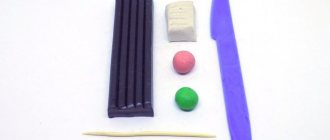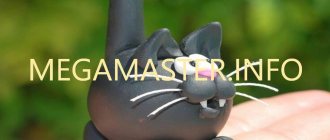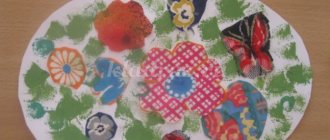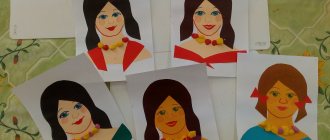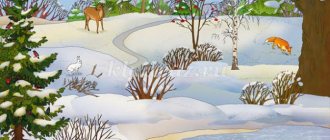Anteater applique
Anteater Facts:
- They are edentulous animals, meaning they have no teeth at all.
- Anteaters use their long tongues to swallow 35,000 ants and termites every day!
- They find food by smell.
- Anteaters live in tropical forests and grasslands of Central and South America.
- They live for about 14 years and are classified as endangered.
Schemes and order of execution of applications
"Cat"
– circle a template with a picture of a cat on a cardboard base;
– draw on the base the eyes, mouth, mustache, ears and paws of the animal;
– apply glue to the base with a brush, glue the cereal in accordance with the plan (the desired color and shape).
Cereal application
"Poodle"
– trace the template with the image of a poodle, cut along the contour (white paper);
– glue the cut out element onto the base, in accordance with the plan, glue cotton balls onto the image of the dog;
– complete the necessary details (muzzle, claws) with felt-tip pens.
Craft template
Cotton ball applique
"Calf"
– trace and cut out elements from felt of different colors according to the template;
– stick the parts onto the base by overlapping.
template for appliqué
"Puppy"
– draw and cut circles of different diameters from paper of various colors in accordance with the plan;
– glue the modules to the base, bending them according to plan.
Modular application scheme
"In the forest"
– paint the base for the workpiece;
– glue parts made of natural materials.
Group application
"Bears at the Pole"
– glue elements for creating a photo (crumpled paper, cotton wool) onto a colored base;
– draw and cut out an image of bears along the contour;
– glue new details to the background image;
– complete your plans with felt-tip pens.
Group application
"Elephant"
– glue the leaves onto the base in accordance with the plan (overlay and design technique).
Application made from natural materials
"Lamb"
– create elements using the quilling technique (performed by a group);
– stick the elements onto the base.
Application using quilling technique
"Fish in the Aquarium"
– each student makes a fish using the origami technique;
– complements the part with simple elements (stripes, circles);
– gluing parts onto the base.
Application with origami elements
Paper applique Raccoon
Raccoon Facts:
- Raccoons will eat anything. Insects, mice, fish, eggs and even garbage!
- Because they eat almost anything, you can find raccoons in any environment - from the farm to the city!
- Raccoons love to live in hollows, logs, and even attics! Young raccoons often spend the first two months of their lives high in tree holes until their mother drops them to the ground.
- Raccoons typically live 2-3 years in the wild.
- Northern raccoons hibernate - they binge on food to store fat and then sleep in their den all winter.
Wombat paper applique
Wombat Facts:
- Wombats are marsupials, meaning they have pouches on their bellies in which they raise their babies.
- A baby wombat lives in its mother's pouch for about five months before it emerges.
- Wombats use their claws to dig burrows in eucalyptus forests and grasslands.
- Wombats are nocturnal and they are vegetarians (herbivores). They come out at night to eat grass, bark and roots.
- A wombat that burrows in fields can be a destroyer of ranches and crop-dependent farms.
Applique Grizzly Bear
Grizzly Bear Facts
- Although grizzly bears are not endangered, an existential threat exists. 1,000 grizzly bears left in the wild .
- Grizzly bears are a North American subspecies of brown bear.
- Grizzly bears are often seen at some of Alaska's best fishing spots, where they feast to accumulate enough body fat to survive the winter.
- During the winter, grizzly bears hibernate. They dig holes on the hillside. Females give birth at this time.
- Grizzly bears are powerful predators, although they eat a wide variety of foods. Nuts, seeds, berries, fish, rodents and moose!
Skills and abilities of children of the senior group in application
What have children of the sixth year of life mastered in the field of appliqué? First, they know how to handle scissors safely. The health of the students is the priority of the kindergarten, and each teacher gives his students clear instructions on how to use scissors so as not to harm themselves and their friends.
In addition, children in the older group can:
- cut the paper into “straws” and wide strips of different lengths;
- tear the cut strips into pieces and place them on plates for later use;
- cut circles from squares and ovals from rectangles using smooth rounding of corners;
- cut geometric shapes, getting smaller or new ones (small rectangles from a large one, triangles from a square); cut out objects or parts of them from paper folded in half and accordion-style:
- use glue carefully and sparingly, remove excess glue with a napkin;
- coat part of the application with glue and fill this area with scraps of paper, cereal, cotton wool and other materials;
- combine in one work several types of materials, various techniques and methods of making parts (quilling, designing, modeling, drawing).
One or several children can work on the image of an animal, depending on the complexity. If a collage is planned, children can prepare animal figures in advance during independent visual arts activities, and during the lesson they can only cut and paste them.
Children in the older group know how to work without interfering with each other. consulting and interacting
Applications with sea animals
We have already talked about which animals of hot countries most appeal to children. Now let's talk a little about the mysterious sea inhabitants!
Photo MK
Dolphins are considered the most popular marine inhabitants. They attract people with their kindness and responsiveness. And it is their figures that we suggest you use for applique on a marine theme: Using stencils, dolphins can be formed from colored sheets, napkins or cereals:
Video tutorial applique dolphin from plasticine
Howler monkey paper applique
Howler Monkey Facts:
- Howler monkeys live in tropical areas of Central and South America.
- They howl so loudly that they can be heard up to 5 km away.
- They have what is called a "prehensile" tail, which means they can use it as an extra hand to grasp branches.
- Howler monkeys can live 15-20 years in the wild.

